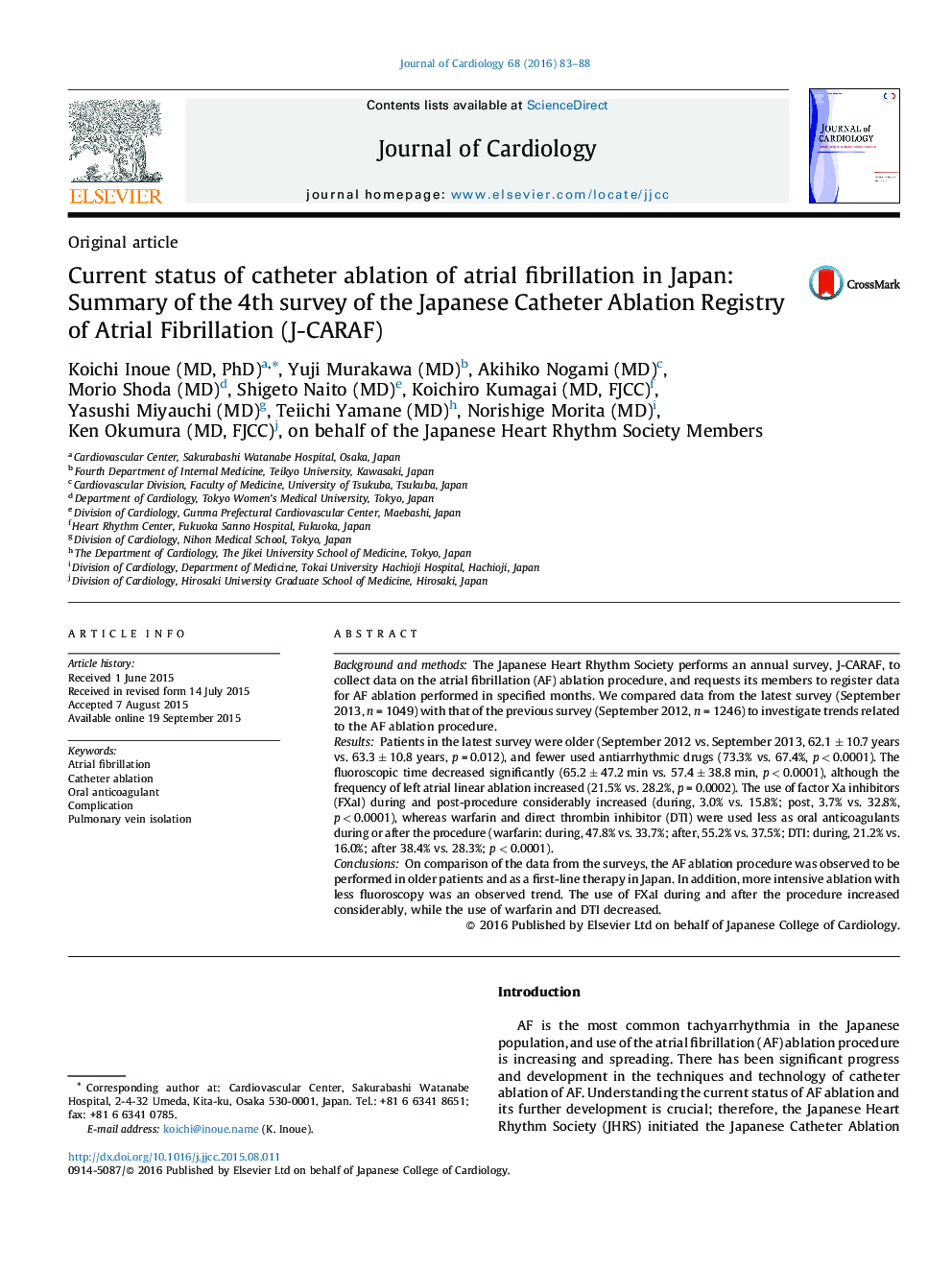| Article ID | Journal | Published Year | Pages | File Type |
|---|---|---|---|---|
| 2962760 | Journal of Cardiology | 2016 | 6 Pages |
Background and methodsThe Japanese Heart Rhythm Society performs an annual survey, J-CARAF, to collect data on the atrial fibrillation (AF) ablation procedure, and requests its members to register data for AF ablation performed in specified months. We compared data from the latest survey (September 2013, n = 1049) with that of the previous survey (September 2012, n = 1246) to investigate trends related to the AF ablation procedure.ResultsPatients in the latest survey were older (September 2012 vs. September 2013, 62.1 ± 10.7 years vs. 63.3 ± 10.8 years, p = 0.012), and fewer used antiarrhythmic drugs (73.3% vs. 67.4%, p < 0.0001). The fluoroscopic time decreased significantly (65.2 ± 47.2 min vs. 57.4 ± 38.8 min, p < 0.0001), although the frequency of left atrial linear ablation increased (21.5% vs. 28.2%, p = 0.0002). The use of factor Xa inhibitors (FXaI) during and post-procedure considerably increased (during, 3.0% vs. 15.8%; post, 3.7% vs. 32.8%, p < 0.0001), whereas warfarin and direct thrombin inhibitor (DTI) were used less as oral anticoagulants during or after the procedure (warfarin: during, 47.8% vs. 33.7%; after, 55.2% vs. 37.5%; DTI: during, 21.2% vs. 16.0%; after 38.4% vs. 28.3%; p < 0.0001).ConclusionsOn comparison of the data from the surveys, the AF ablation procedure was observed to be performed in older patients and as a first-line therapy in Japan. In addition, more intensive ablation with less fluoroscopy was an observed trend. The use of FXaI during and after the procedure increased considerably, while the use of warfarin and DTI decreased.
